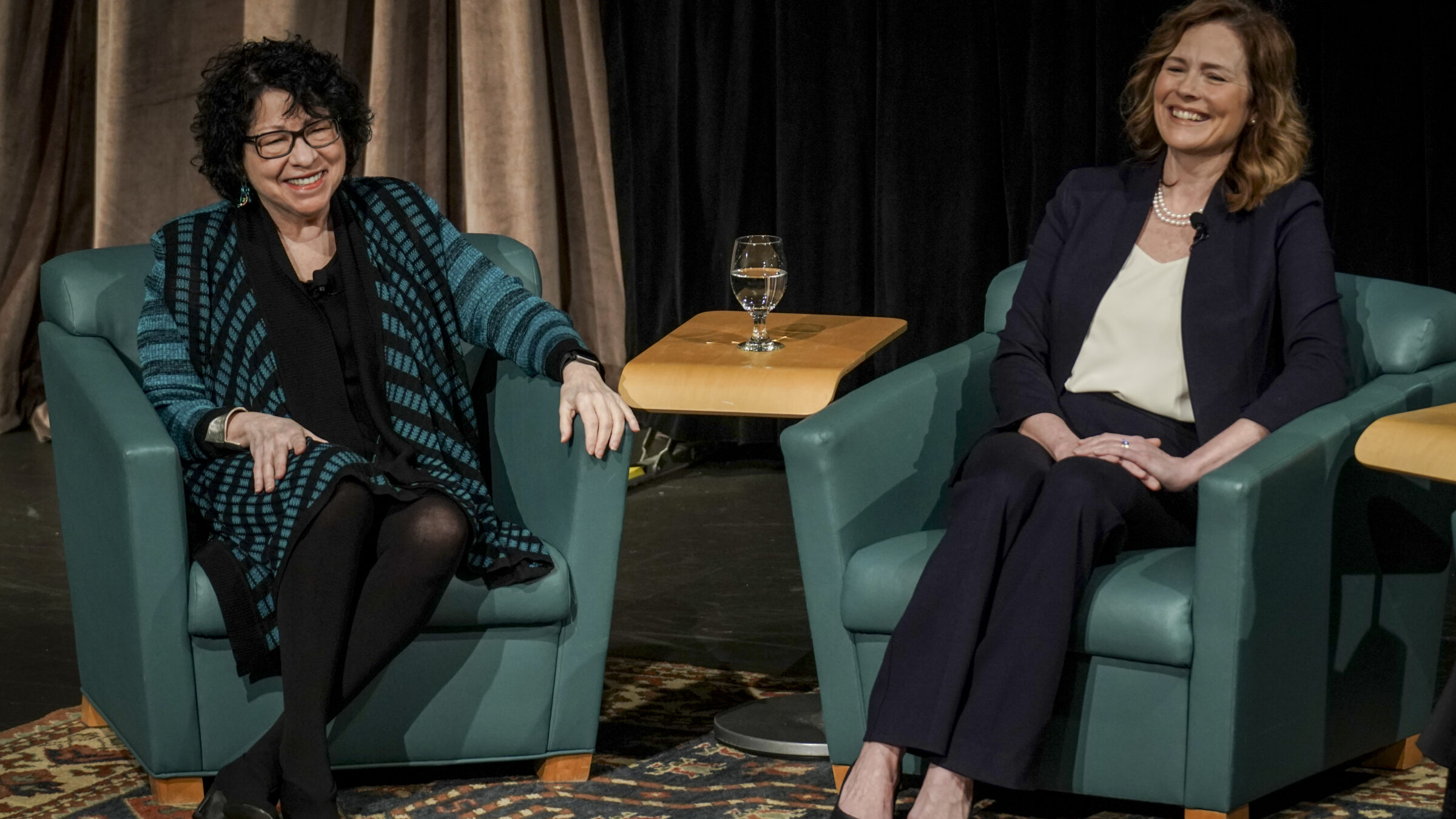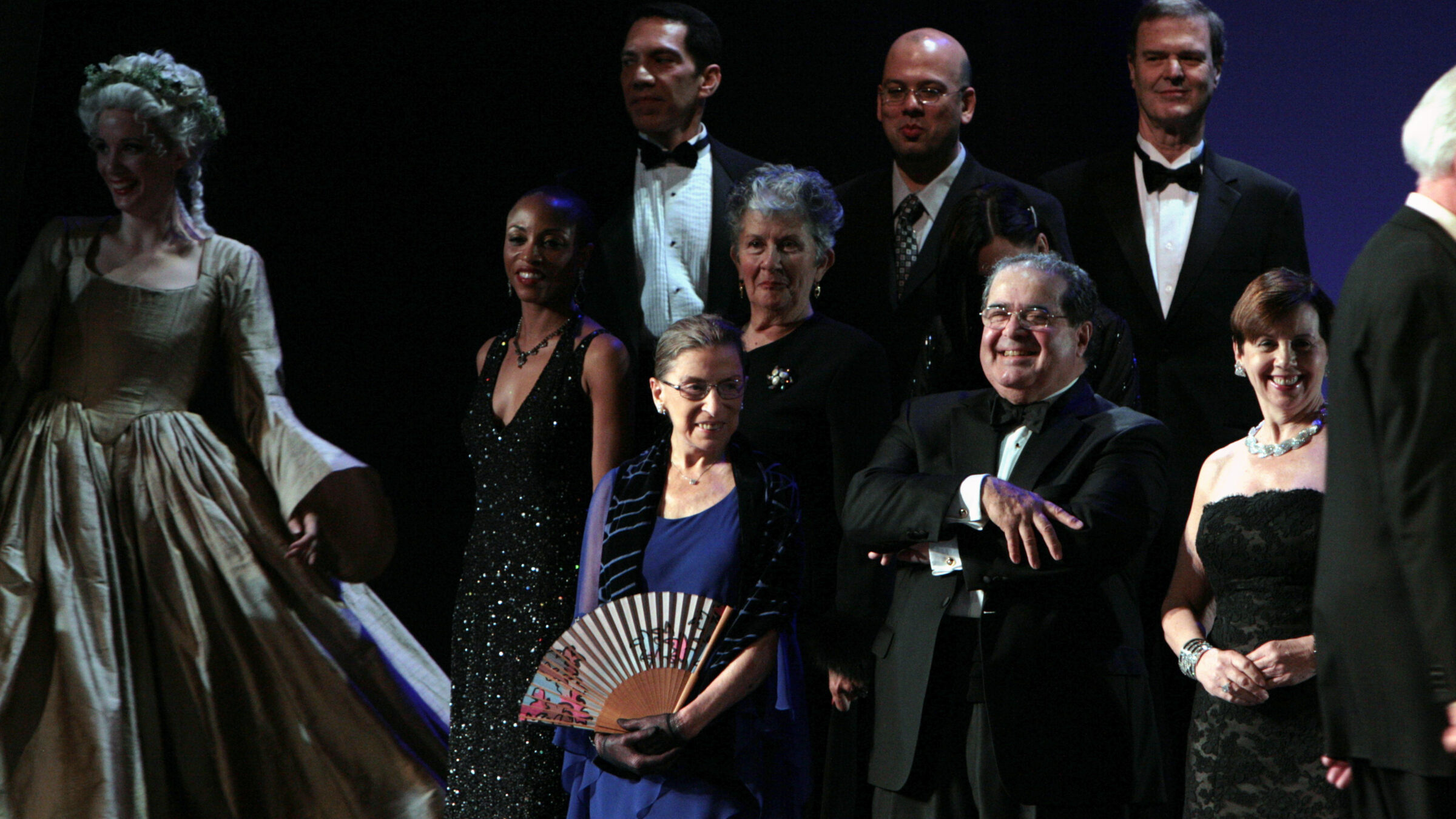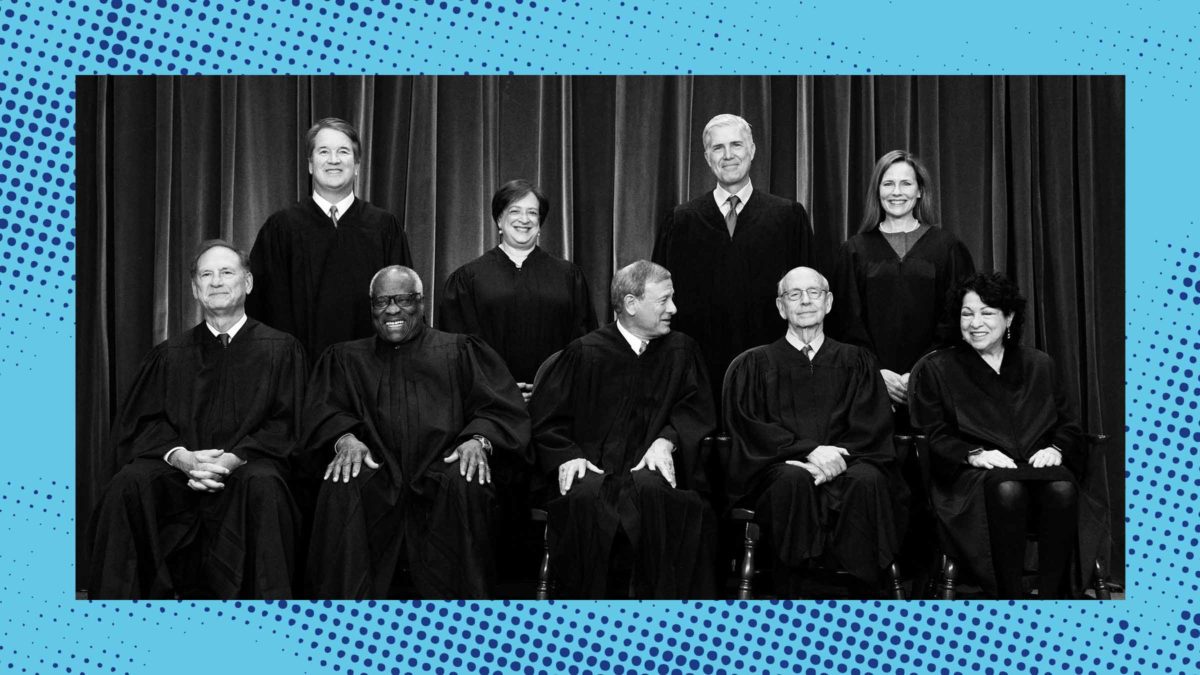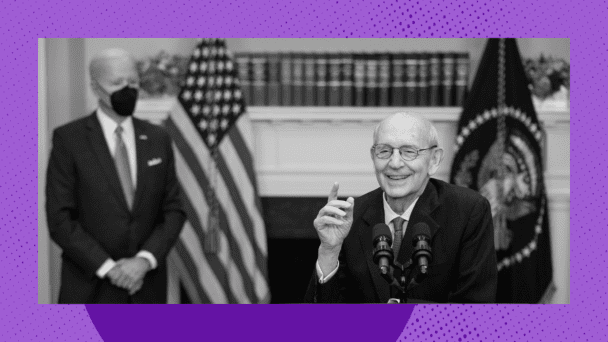Imagine a job where you effectively can’t be fired, you take home a six-figure salary, and every year you get four new smart, highly educated assistants to help you with your primary duties. You mostly get summers off, when you can travel internationally on someone else’s dime, or finish the book that some optimistic publisher gave you a seven-figure advance for.
Sure, you may have some coworkers with whom you have strong disagreements—and they can’t be fired, either, so you’re basically stuck with them. But all in all, it’s a pretty good job with a real ability to change people’s lives for the better (or worse). How much would it matter if you were friends with your colleagues? And, perhaps even more importantly, how much would you feel the need to make sure everyone knew it?
Apparently, more than a few Supreme Court justices think the answers to both questions are “Way too much.” Earlier this year, Justices Sonia Sotomayor and Amy Coney Barrett went on a road show to persuade the public that, actually, despite all the 6–3 decisions replete with jabs and barbs at each other’s reasoning, the justices actually really like each other. “Justice Sotomayor showed up in my office with Halloween candy for my kids,“ Barrett revealed; Sotomayor mentioned that she’s gone to “virtually all” her colleagues’ homes for meals. (There have been only about a dozen justices during her time on the Court, so I assume the caveat reflects her desire to avoid sharing pinot grigio with Ginni Thomas.)
Beyond the Snickers deliveries and dinner parties, both justices claimed that some kind of solidarity and kinship exists. In Sotomayor’s words, “When we disagree, our pens are sharp, but on a personal level, we never translate that into our relationship with one another.”

Just two buds, or not, who cares (Photo by Jahi Chikwendiu/The Washington Post via Getty Images)
These claims seem naive, if not disingenuous. Just a few months ago, Barrett implied that the liberal justices were too strident when voicing their (halfhearted) objections to Trump v. Anderson, the case that overturned former president Donald Trump’s removal from the Colorado primary ballot. During a “volatile” election season, Barrett sniffed, “writings on the Court should turn the national temperature down, not up.” At oral argument in Dobbs v. Jackson Women’s Health Organization in late 2021, Sotomayor asked if the Court could even survive the “stench” of overturning Roe v. Wade just because Barrett had replaced Justice Ruth Bader Ginsburg on the bench.
Famously, when the Court established a right to same-sex marriage in Obergefell v. Hodges in 2015, Justice Antonin Scalia took direct aim at Justice Anthony Kennedy’s majority opinion, comparing it to the “mystical aphorisms of the fortune cookie” that he’d sooner ‘hide [his] head in a bag’ than join.”
With disturbing regularity, the American public must bear witness to a pathology that the justices and other political figures, for some reason, think anyone cares about: the fiction that Supreme Court justices are just one big happy family. But these people are friends not in the way you or I might think of the term; they are only friendly because they have to be, stuck in an “arranged marriage” without the possibility of divorce, to use Barrett’s recent formulation. It also doesn’t matter if the justices are truly friends, and it’s actively harmful for progressives to pretend that they are.
Sotomayor and Barrett are hardly the first justices to peddle this credulous narrative of conviviality. If I say two names, “Scalia” and “Ginsburg,” the next word to come to mind is probably “opera.” The two justices themselves, and the journalists who cover (and sometimes befriend) them, became so enamored of repeatedly describing their trips to see La Traviata that it inspired the composition of an actual opera that Ginsburg attended. In her execrable memoir, NPR Supreme Court correspondent Nina Totenberg described them as “happy warriors, playful with each other, maintaining an almost sibling-style banter.”
I’m willing to believe that those two were fond of each other to an unusual degree, given their political differences. But focusing on their relationship rather than their diametrically opposed views of the roles of women, queer people, and racial minorities in American society reduces their power as Supreme Court justices to a sidebar.
During Justice Elena Kagan’s confirmation process, Idaho Republican Senator Jim Risch told her of his concerns about her background as a Harvard Law dean and native New Yorker. Could she really understand how important guns are to his constituents, he asked? Graciously, Kagan promised that if she were confirmed, she’d go hunting with Scalia. Not only did she fulfill that promise, it formed the foundation of their friendship, which included several more hunting trips in the years that followed.
Again, assume Kagan really enjoyed traveling around the country with Scalia, learning to exercise her Second Amendment rights. Does that really make up for all the rights he sought to strip from racial minorities, LGBTQ+ people, and women during his 30 years on the bench? I don’t care how much fun they had squatting in the marsh shooting wildlife; it certainly doesn’t seem to have furthered her jurisprudential goals.
What these performances have in common is a deep-seated obsession with convincing the public that everything is fine; that everyone loves each other; that no one has any hard feelings after their colleagues misrepresented the factual basis of constitutional claims to twist the law, or implied that dissenting opinions were too aggressive. What’s a little fighting among justices whose decisions control the lives of 300 million Americans every year?

Justices Antonin Scalia and Ruth Bader Ginsburg attend the opera together, October 2009 (Photo by Karin Cooper/Face the Nation/Getty Images)
The desire to push this narrative even persists even after you leave the nest. Fresh off critiques of his anodyne new book, Justice Stephen Breyer took to the New York Times editorial page to inform us that he and his former colleagues would, in his cutesy phrase, “do things together outside class.” In Breyer’s telling, the justices may virulently disagree at their conferences to tally votes on whatever conservative cause de jour merits support from the conservative bloc, but afterwards they still eat lunch while “talking about sports or trading so-called jokes and other nonlegal matters.” Apparently, you can still swallow your salad after the bitter pill of Shelby County v. Holder.
But even if the justices do enjoy mealtime together, forcing the rest of us to bear witness props up a regressive fantasy that occludes what the Court really gets up to. Every time a justice or a reporter reiterates this narrative, they reduce the Court to a gathering of friends that only incidentally enacts massive social policy change. Given limited real estate and attention spans, focusing on the interpersonal at the expense of the political numbs the public to the Court’s influence. Instead of witnessing, critiquing, and protesting the court’s retrograde decisions, the media and the justices compel the public to get misty-eyed thinking about Ruth and Nino in box seats, taking in the glories of opera.
The pressure to build bridges seems to only apply to liberal justices. Kagan felt compelled to go shooting with Scalia, but a Democratic senator would never ask, say, Justice Neil Gorsuch to promise to hang with Sotomayor at a Yankees game. Just as only liberal politicians are ever responsible for reaching across the aisle in Congress or promoting bipartisanship from the presidency, friendships on the Court don’t seem to hold any innate value for the politicians and pundits who emphasize it.
I believe that conservatives who push the friendship agenda believe, probably accurately, that pressuring liberal justices to befriend their ideological enemies pulls the left-leaning justices rightward, or softens their public critiques. The recent high-profile liberal dissenting opinions—Dobbs, Bruen, Students for Fair Admissions, and 303 Creative, among too many others—make persuasive, compelling arguments about the conservative legal movement’s efforts to promote the rights of their constituency and trample on everyone else’s. But the liberal justices avoid the spicy rhetoric of a Scalia, presumably in order to preserve the authority and dignity of the Court. Regardless of whether one thinks the Court has ever deserved such things, it certainly doesn’t right now. Working to preserve a house on fire just wastes time when you could call the fire department to douse the flames with a few more seats on the bench.

“Check your spam, maybe the evite is in there?” (Photo by Alex Wong/Getty Images)
Worse still, the liberal justices evince some “go along to get along” tendencies, perhaps as a result of the friendships they believe in. In Trump v. Anderson, the Colorado ballot disqualification case, the liberal justices decided to concur in the unsigned per curiam opinion rather than dissent. While that may seem like a minor distinction, it makes a meaningful difference when the right can claim in a sound bite or a headline that the Court unanimously supported Trump. I don’t think the liberal justices need to portray every ideologically split case as a dumpster fire, but a strategy of elegiac dissents coupled with periodic acquiescence to the conservative agenda does real harm to progressive goals.
Even if cross-ideological friendship has allowed the liberals to occasionally moderate the extreme views of conservative justices, that happened during a different era. And the public has always been wise to take the friendship story as myth. Dating back to at least The Brethren, Bob Woodward and Scott Armstrong’s 1979 exposé of the Supreme Court, observers have known of the enmity and scorn that the justices reserved for one another behind closed doors. If half a century ago justices were criticizing Warren Burger as an intellectual lightweight unfit to be Chief Justice, the halcyon days of camaraderie never existed.
The relic of fellowship has become an effective tool for conservative politicians and justices to wield while obscuring what the Supreme Court actually does. But in this era of a six-justice conservative supermajority, the juice hasn’t proven worth the squeeze. The justices must realize that they are not a supper club. They have high-stakes political appointments that control the civil rights of regular people. Those who attempt to obscure that reality care more about their own political goals than selling a fantasy of friendship that no one should buy.




